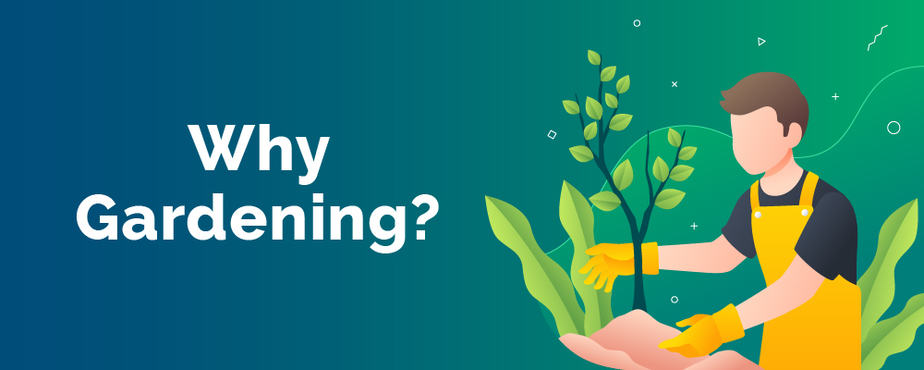Table of Contents
Why Gardening?
Hobbies don’t always need to be overcomplicated and expensive. Nowadays, too many people believe that they need to spend all their money on the latest gadgets and games to have fun. But have you ever wondered what would happen if you stripped away all of the technology?
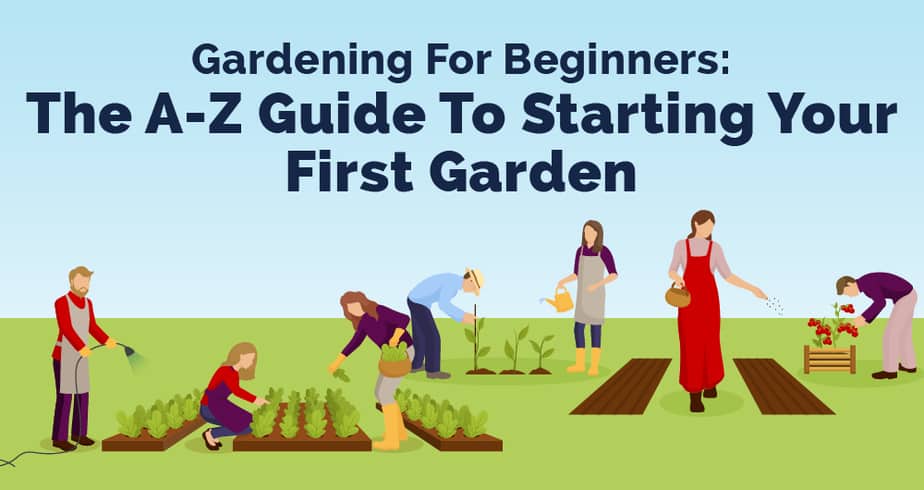
Gardening can be an excellent way of doing just this. Gather your tools, soil, and seeds and get outside into the fresh, crisp air. Gardening is a hobby that can take you away from the real world for hours at a time. You’ll begin at 9 am and finish at 5 pm, but it will feel as though you’ve only been working for a couple of minutes.
There are plenty of benefits to gardening, which we will discuss later, and many people use it as a therapeutic tool to clear their minds and focus on something other than problems arising in the real world. W. Atlee Burpee & Co. saw a surge in seed purchases in 2020 that was higher than ever before in their 144-year history, presumably because of the coronavirus outbreak.
With no knowing how long we’re going to be stuck at home, more and more people are beginning to appreciate the little things around them and use their resources such as their garden. If you want to start growing your own produce and creating your personal private place of serenity, look no further than this article.
We’re going to be looking into the benefits you can expect to see from gardening, all the tools that you’ll need, how to go about beginning your gardening adventure, as well as some important considerations. Let’s dig in, shall we?
Benefits Of Having A Garden
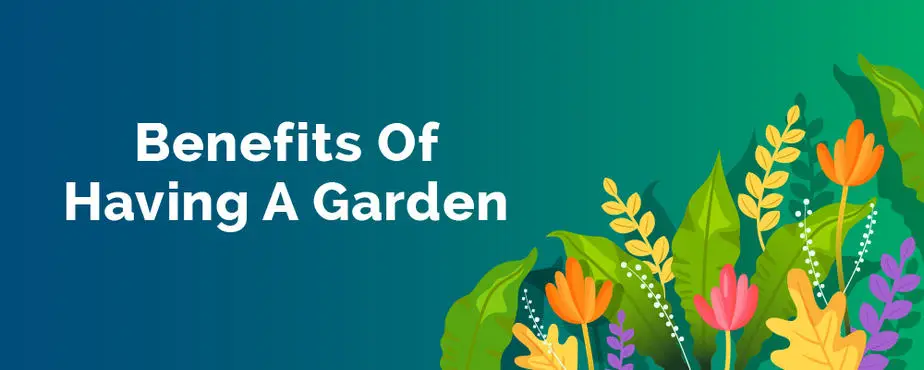
The advantages of gardening are plentiful and once you’ve read them, you’ll be wondering why you took so long to take up the hobby. Gardening is not just a method of growing your food, it is also very relaxing and enjoyable. Let’s take a look into a few of the biggest benefits of taking up gardening.
Boost your self-esteem

Many people put off gardening because they think that they’re not good at it. However, gardening for beginners can be rather easy if you start off slowly. Growing something simple such as flowers is simple because flowers are rather hardy and can take some neglect here and there.
Beginning your gardening journey can be very rewarding. Once you plant your seeds, watch them grow, and nurture them to maturity, you’ll have a sense of pride that you cannot get anywhere else. Feeling attached to your crops is normal as you’ve raised the plant throughout its entire lifecycle.
Once you’ve seen that you have the ability to grow flowers and crops, you’ll have a great boost in self-esteem. Yeah, you just did that! Everyone loves mastering new things, so it makes sense that you’d feel a sense of accomplishment when you can physically see rewarding results.
You can also impress your friends and family with your gardening skills. Gardeners are always left with a surplus of crops, whether it be fruits, vegetables, or herbs. So, wow the people in your life with a gift basket full of homegrown goodies.
Enjoy Time With The Family

You’re never too young to start gardening! Enjoy planting and taking care of crops with your children, grandchildren, lovers, or friends. While spending time in your garden alone can be relaxing and enjoyable for independent people, you can’t beat spending time with loved ones either!
So, invite your friends and family over for a long day of gardening and a catch-up. Teach the young ones about sustainable living and trick your friends into coming over and helping you dig up countless weeds!
Keep Your Heart Happy
 Gardening may not feel like an aerobic exercise while you’re in the moment, but we can assure you that you’ll feel the burn the next day! All that digging, pulling, and lifting is certain to burn calories strengthening your muscles. The Centers for Disease Control and Prevention (CDC) has confirmed that gardening is a form of exercise.
Gardening may not feel like an aerobic exercise while you’re in the moment, but we can assure you that you’ll feel the burn the next day! All that digging, pulling, and lifting is certain to burn calories strengthening your muscles. The Centers for Disease Control and Prevention (CDC) has confirmed that gardening is a form of exercise.
Gardening works for every muscle group in your body and there are plenty of studies showing that it can reduce obesity and cardiovascular diseases. There has also been evidence that gardening can reduce the risk of some cancers such as breast, bladder, and prostate.
Improve Your Mood

Not only will boosting your self-esteem and feeling healthier be sure to improve your mood, gardening can also reduce stress and make you feel happier in yourself. The opportunity to focus on nothing but the soil in front of you can make you forget everything that might be worrying you in life.
The opportunity to step away from your worries for a moment and think only of flowers and shrubs is invaluable. It has been shown that gardening can help to reduce signs of depression and anxiety, which will also reduce stress caused by these mental health problems.
If you’re new to gardening and are trying to find reasons to take up the hobby, we believe that the fact that gardening can make you happy is reason enough. Within soil lives a healthy bacteria called M.vaccae. There are plenty of health benefits to the bacteria and breathing it in while gardening can reduce anxiety and increase levels of serotonin instantly.
Amp up your vitamin intake
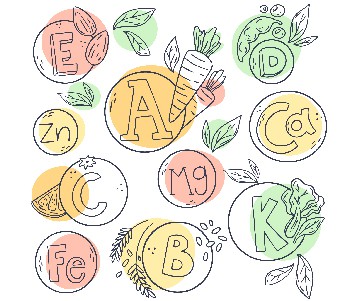
Vitamin D is essential for many functions in the body such as maintaining a healthy immune system and supporting strong bones. The main source of vitamin D comes from sunlight, so you’d think that it wouldn’t be easy to have a vitamin D deficiency, right?
Well, unfortunately, many people do have a deficiency in vitamin D without realizing it. Gardening can help you achieve the right amount of vitamin D in the body without having to take supplements.
A study found that gardening helped to reduce the likelihood of a vitamin D deficiency in older adults. However, it’s important to bear in mind that long periods of sun exposure can increase the risk of skin cancer. Make sure to keep your sunscreen topped up to keep you healthy and protected.
Healthy Eating
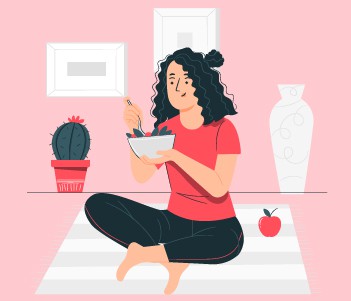 Growing your own fruit and vegetables can help you to stick to a healthy diet. What’s the point of growing all of these crops at home when you don’t eat them? You’ll be more inclined to eat homegrown produce because you know that it hasn’t been sprayed with any chemicals in the farming process.
Growing your own fruit and vegetables can help you to stick to a healthy diet. What’s the point of growing all of these crops at home when you don’t eat them? You’ll be more inclined to eat homegrown produce because you know that it hasn’t been sprayed with any chemicals in the farming process.
Many people who take up gardening pair healthy eating with the calories burned and find that it’s an effective method of reducing your BMI. Overall, gardening is an excellent way to lose weight without even realizing that you’re doing it.
Moreover, growing your own food can save you money. Seeds are very inexpensive and you can bulk buy them to save even more money. Soil, fertilizer, and the tools will make for a steeper upfront investment but they will certainly save you money in the long run. So, instead of buying bags of produce every week, save yourself the hassle and just pop out into the garden.
What Equipment Do You Need?
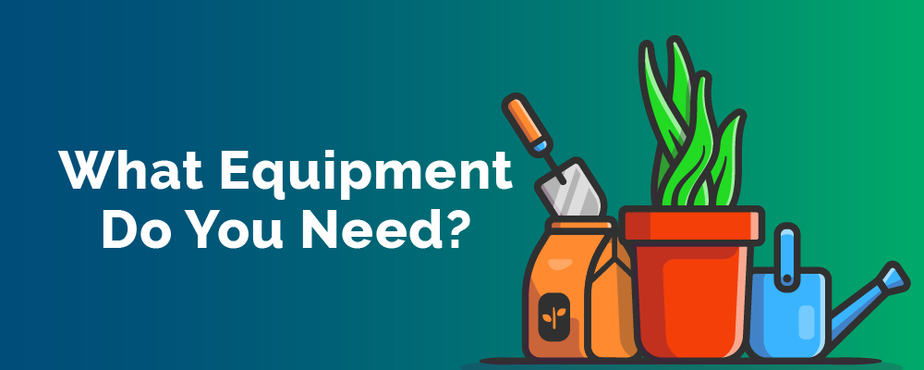
Gardening is a tough hobby that can be made much easier or harder depending on the equipment that you possess. High-quality equipment will make your gardening experience more enjoyable, relaxing, and easier. Below we’ve compiled a list of the ten most important tools to invest in to make gardening more fun.
Gloves
Gloves are perhaps one of the most important pieces of equipment that you will need. You don’t need much protective gear to garden with, but we would recommend you to get some thick gloves. Splinters, thorns, and bug bites are just some of the issues that could arise from not wearing gardening gloves as you work.
Your gloves should be thick to avoid injury but not too stiff that you cannot move your hands. You might want to look for a pair of water-resistant gloves that will keep your hands comfortable and dry. They should be breathable and reach up past your wrist for added protection.
Spade
A spade is a shovel that has a squared head. They can come with long or short handles and are excellent for digging holes quickly and efficiently. The square head allows you to pick up the maximum amount of dirt with minimal effort.
You’ll need a spade if you’re planning on planting any larger plants such as shrubs. Otherwise, you’ll be spending hours digging one hole and the process will be much slower. Stainless steel is a good material for a spade because it won’t rust and it’s relatively lightweight.
Spades are generally used with additional force from your foot to push into the soil deeper. You should look for a spade with a tread on the top edge of the head which will make it easier for your boot to get a good grip on the spade, preventing injury.
Hand Trowel
Trowels are another essential piece of equipment. They have a pointed head that makes digging into the soil very easy. Twisting a trowel around in soil allows you to make a perfect hole for individual plants. Using this method also allows you to remove weeds from your plant beds within seconds, as well as their roots so that they don’t grow back.
Hand trowels come in different widths depending on the size of the hole you want to create. The width generally ranges from 1.8 to 4.5 inches. Stainless steel trowels are great for durability and reliability, so this is the material to look out for.
Garden Fork
Garden forks turn the soil and aerate it so that the roots of your plants aren’t bogged down by too much soil. Compacted soil can prevent the roots from getting all of the nutrients that they need and therefore kill the plant. Dense soil also promoted root rot and water retention, ending in fungal and bacterial infections.
Garden forks look like a pitchfork, only smaller. You can use them for digging, mixing, and creating thin holes for tiny seedlings. Finding a garden fork with squared tines rather than flat alternatives will make the fork stronger and more durable should it encounter a rock in the soil.
Shears
Shears are used for pruning plants that like to grow in every direction. They come equipped with sharp blades that give branches a clean cut every time. Think of them as a large pair of durable scissors, but instead of cutting paper they cut thick tree and shrub branches.
You can sharpen shears as many times as you want to keep them in fighting condition. The sharper your shears, the less damage they’re going to do to your plants. Loppers are another beneficial piece of equipment that is similar to shears, only with a longer handle. Loppers can reach higher branches and cut thicker wood without breaking.
Rake
A rake is very handy for after you’ve finished trimming and pruning all of your plants. The rake will easily move all of the debris in your garden into one place, making it easier for you to gather into a garden bag. Rakes are made from metal and make your garden look much neater within minutes.
You can also use rakes on the soil. As a rake looks just like a garden fork, only longer in width and height, you can use it to quickly aerate the soil if you have a lot of ground to cover. If you’re using mulch you can rake it into the soil to ensure an even mixture of the two.
Garden Hose
A hose is very important in the summertime when there is little rain to water your plants. You should ideally choose a hose with an adjustable nozzle to alter the type of spray as and when you need to. Different plants need different water pressures so an adjustable hose will become invaluable to any gardener.
Watering Can
Watering cans are better for watering some finicky plants instead of a garden hose. They are also easier to use for young children and older adults. Watering cans can either come in metal or plastic material so it’s up to you which material you opt for.
Hoe
A hoe is a good tool for cutting back weeds and preparing a garden for new growth. A vegetable garden will need a wider hoe that is stable and durable. However, if you’re growing a perennial garden you might want to find a thinner hoe for a more gentle application.
There are different types of hoes for different uses. Weeding hoes are for dragging weeds out of the soil and flat hoes are better for turning soil and aerating it ready for new plants.
Wheelbarrow
Finally, a wheelbarrow can come in handy when you need to transport heavy loads from place A to B. This could be bags of garden waste that needs moving out of the garden, heaps of fresh soil to be used, or multiple plants that you want to transport in one quick trip.
Wheelbarrows are large containers with wheels that can be pushed over dirt, grass, and stones. They’re very beneficial for anyone that doesn’t want to carry heavy loads throughout the day. However, bear in mind that wheelbarrows are cumbersome and take a lot of room to store.
11 Guidelines For Starting Your Garden:
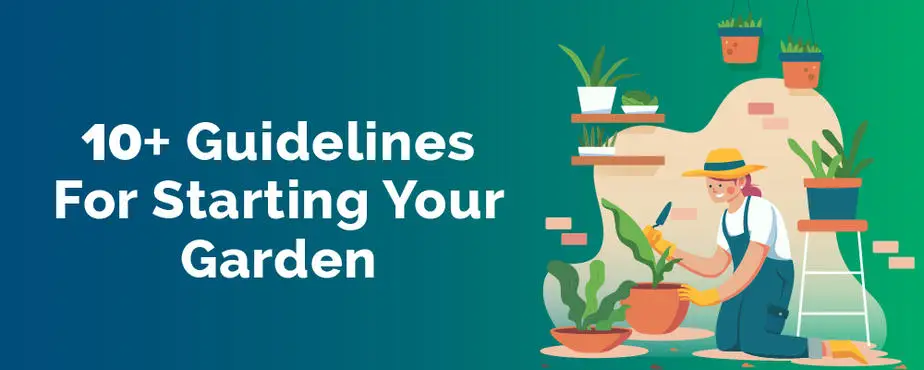
So, now that you’ve gathered your equipment and you’re excited to reap the benefits of gardening, let’s take you through some helpful guidelines that can help you on your gardening journey. We’ve got 11 helpful tips for you to follow to ensure that you get the most out of your hobby.
Choose What You’re Planting

Let’s not get ahead of ourselves! First, you’re going to need to know what you want to plant. A lot of people get caught up in the pretty looking seed packets and buy them for the funky colored crops. Top tip – if you’re not going to eat red cabbage, don’t grow the red cabbage in your garden. We know that it might offer some vibrancy to the backyard, but it’s not worth it if you’re just going to waste it.
You should also consider the area in which you live and which plants are going to be able to grow there. Some crops are very picky with their climate and won’t tolerate an area that is too rainy and waterlogged. However, don’t think that if you live in a hot climate you’re safe either, as some plants wither away from too hot conditions as well.
Finally, don’t grow crops that are too big for your garden. If you have a small bed with minimal space available, you should stick to small plants that can grow upwards rather than outwards. Pumpkins, watermelon, and squash are all crops that need ample space to grow.
Decide On Your Location
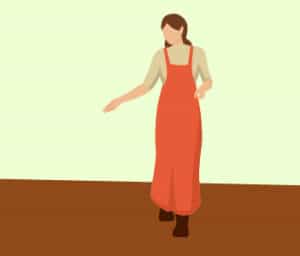 Now that you know what crops you want to plant you need to see whether they can grow properly in your garden. Many fruits and vegetables need bright, direct sunlight for many hours of the day, so if you have a shaded garden this might not be attainable. Instead, you’ll need to find crops that are accepting of shade and that can grow regardless of the light.
Now that you know what crops you want to plant you need to see whether they can grow properly in your garden. Many fruits and vegetables need bright, direct sunlight for many hours of the day, so if you have a shaded garden this might not be attainable. Instead, you’ll need to find crops that are accepting of shade and that can grow regardless of the light.
Likewise, some crops are much more tolerant of rain than others. If you live in a particularly rainy climate, you should see which crops can withstand this. Does your garden often get unwelcome visitors? If so, you’re going to need a plan to keep them away from your crops. Otherwise, they’ll be eaten, pulled up out of the ground, and damaged beyond repair.
Plan Your Garden Beds
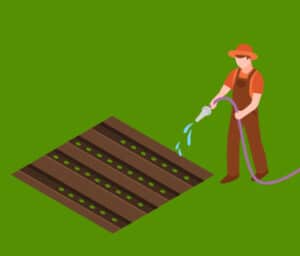
Your crops need to be planted in a garden bed, whether it be sunken or raised. Sunken beds are positioned directly in the ground and can help plants in particularly dry climates gather more moisture from deeper in the soil. Raised garden beds look nicer and are easier to use but they need more watering and fertilization.
More and more people are using raised beds in their gardens to make it look neater. However, some people prefer a sunken bed because it’s more efficient when it comes to space. Whichever bed you choose, you will also need to work out the size of it.
Raised garden beds are often square shapes, although we have seen hexagonal garden beds too, and around three to four feet wide. A sunken bed can be much larger but remember not to make it too large. If you cannot reach the middle of the bed from the sidelines you’ll be tempted to stand in the bed and therefore compromise the soil and roots.
Make sure that you plant the produce with enough room for it to grow. Different crops have different requirements for the space it needs. For example, carrots need 3 inches around them to grow, but cabbage can need up to 18 inches between each plant. Don’t overcrowd your garden beds as this can prevent the crops from growing.
Invest In Basic Tools
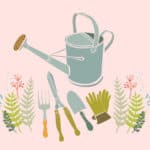
As we’ve mentioned above, you’ll need to purchase some equipment before you begin gardening. Your tools should be high-quality and ideally made from metal rather than plastic. Metal is more durable and less likely to break than plastic, therefore it should last you for much longer.
However, your tools will only remain high-quality if you look after them. Clean them after each use and dry them thoroughly to avoid rust or corrosion from setting in. If you do opt for plastic tools you should keep them somewhere warm and dry as low temperatures can cause the plastic to become brittle and useless.
Test Your Soil
Soil can be one of three things – acidic, alkaline, or neutral. We all learned about pH in science class, but what does it mean when it comes to the soil? Most produce prefers a pH7 soil, or neutral, to grow properly. However, potatoes and a few other crops prefer an acidic environment. Others enjoy alkaline soils. Do your research before planting your crops.

There are plenty of methods of testing your soil pH level. You should also test your soil to see the balance of different particles. Soil often contains rocks, clay, sand, and silt. In a perfect world, your soil should contain 20% clay, 40% silt, and 40% sand. However, some plants prefer a different ratio to this, so it’s worth looking into the particular plants that you want to grow.
Prepare The Soil Correctly
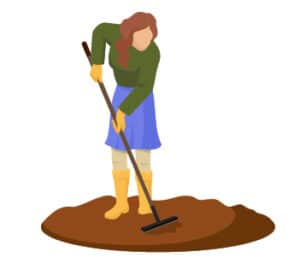
Preparing your soil is essential to ensure that your plants grow as well as they can. You should ideally begin preparing your soil as early as autumn if you’re planning on planting in springtime. However, leaving two seasons between preparing the soil and planting the seeds is not essential.
You should use the highest-quality soil you can get your hands on. There are some better than others for garden beds. Make sure that the soil is suitable for whatever you’re planning to grow in it, whether it be fruit and vegetables or flowers and shrubs.
Choose The Right Seeds / Transplants For Your Climate
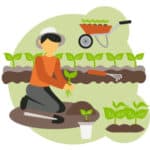
The climate is incredibly important for choosing which plants you can grow in your garden. If your climate is too strong for a crop, it won’t stand a chance in your garden and you’ll be left with nothing but a waste of time and money. Some crops can grow in climates if they’re planted as transplants but not as seeds.
This is because the climate is not good enough for the seed to establish roots and grow from nothing. However, if you opt for a transplant with established roots you might be able to nurture it carefully enough so that it continues to grow successfully. Make sure that the transplants are healthy and ready to be placed into a garden bed.
Fertilizing Properly
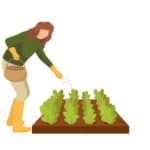
You will need to fertilize the soil with compost or mulch. Mix all of this in your garden bed and allow it to settle. The compost will feed the soil and enrich it with nutrients to give to the plant roots when they arrive. This should make the adjustment period much easier for the plants and give you a higher success rate of growing crops.
If you’re planning on using a store-bought fertilizer, make sure that it is safe for what you’re growing. If you are growing fruit and vegetables to consume, you need a fertilizer that is suitable for consumption. We recommend organic fertilizer as it’s much more beneficial for your crops.
Plant With Care
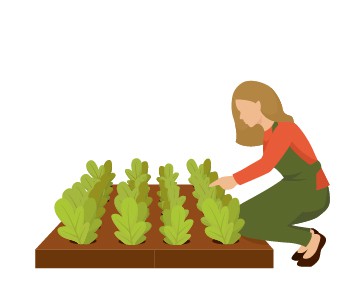
A lot of seeds come with very basic instructions for you to try and decipher on your own. However, there are some tips that we can give you to ensure that your plants have the best chance of sticking and surviving in your garden.
Firstly, plant the seeds three times the diameter of the seed into the soil. This gives the seed enough space to germinate before growing up and out of the soil. Transplants need to be planted at the same diameter as the pot that they were growing in. Don’t plant them any lower or higher than this as it could stress the plant out and cause it not to grow.
Research what your plant likes before hoping for the best and leaving them in your garden. If your plant cannot tolerate cold weather, wait at least a week after the last frost has come. You should also take note of how old your plant is if it’s a transplant. Younger plants will be much easier to nurture than older plants.
Nurture, Water, and Care For Your Garden
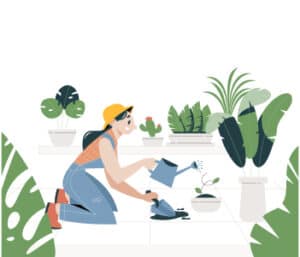
Speaking of nurturing, you need to take good care of your plants. Planting seeds or transplants are only the beginning, and you need to be committed if you’re going to see a successful garden.
Take the time out of your day to tend to your garden. Set up a watering schedule so that you don’t over or underwater the plants. During the growing season, your plants will need around one inch of water a week. If they don’t get this from nature, you’ll have to get the hose out.
Look out for bugs on your plants. If you have pests it could be a sign that your plants are stressed and not being looked after well. Take care of them to ensure that they’re happy and healthy. As you begin to pay more attention you should notice the pests dissipating.
Harvest Your Hard Work
After a couple of weeks, you should begin seeing rewards from your hard work. Some crops can be harvested from their parent plant, which will grow more crops within a few more weeks. Others are dug up, roots and all, and require you to plant more seeds and start from square one. 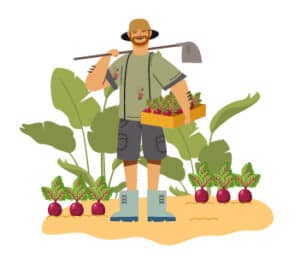
You should harvest tomatoes and peppers while they’re green. They’ll ripen within a couple of days and be ready to eat. You can pick beans and berries whenever they look large enough. All crops are different, so do your research on when to harvest your garden vegetables.
Expert Advice – Things To Consider:
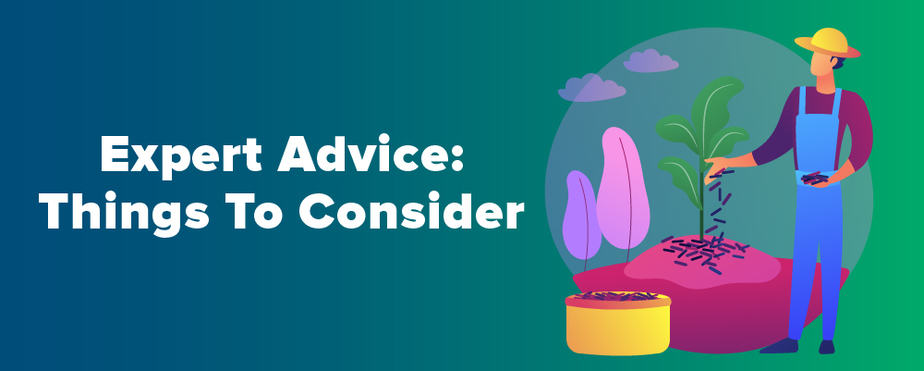
Above was just a guideline of how to begin gardening for beginners. Once you’ve had a few tests runs you might find that there are kinks that you wish to get out of the process. Below are some tips meant to take your gardening skill up to the next level.
Find Out Your Hardiness Zone
There is plenty of hardiness zone maps out there depending on where you live. These show how well your plants will cope with winter temperatures. Some plants will be able to withstand the cold temperatures and some will not.
For example, a seed might say that the plant is capable of being ‘hardy to zone 7’, meaning that the plant will survive in temperatures as low as 0 to 10 degrees Fahrenheit. There is a USA hardiness map for your convenience.
Get A Gardening Journal
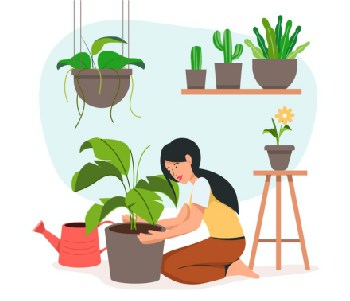 Gardening journals are great for beginners because they allow you to take note of every single thing about your garden. They will often come with graphs for you to plan out your garden beds, budget sheets, and seed logs.
Gardening journals are great for beginners because they allow you to take note of every single thing about your garden. They will often come with graphs for you to plan out your garden beds, budget sheets, and seed logs.
You can make a note of any pest problems so that you can refer back to them in case of any issues in the future, you can plan out your monthly and weekly tasks, and you can create a watering and harvesting schedule.
Use A Photo Album To Store Seed Packets
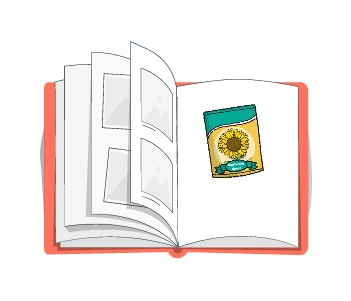 Seed packets are fiddly little things that always seem to go missing when you need them most. They explain care and harvesting instructions for the individual seeds, so you must keep them in case you need to refer back to them at some point.
Seed packets are fiddly little things that always seem to go missing when you need them most. They explain care and harvesting instructions for the individual seeds, so you must keep them in case you need to refer back to them at some point.
One way of doing this is to write all of the information in your gardening journal; however, this can be very long-winded if you have a lot of packets. Another way is to keep them in photo albums.
The photo album will display the seed packets so all you have to do is flick through until you find the packet that you’re after. This can also be very handy if you want to store seed packets that still have seeds in them. You can create your own personal seed library.
Consider Companion Planting
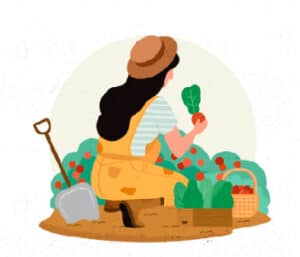
Companion planting is a way to protect plants from pests and improve your crops’ quality. Many gardeners have found success with companion planting, which is essentially planting two different plants together so that they can help each other grow and thrive.
There has been limited research conducted to support the effectiveness of companion planting, but many gardeners swear by it. An example is using a tall crop such as sweetcorn and planting it with lettuce, a crop that likes shaded conditions.
Many herbs can be planted next to other crops to prevent pests. For example, mint will deter ants, cabbage butterflies, and flies from ruining your produce. Read up on a detailed companion planting guide to see which plants are companions and which are not.
Mix Annuals And Perennial Flowers
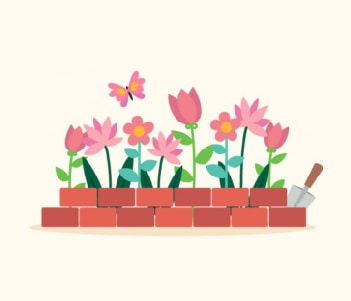 To get the most out of your flower displays, you should plant perennial flowers with annual flowers. The former blooms for four to eight weeks a year and then won’t bloom until the next year. Annuals bloom only for one year, but they last longer than perennials within a year.
To get the most out of your flower displays, you should plant perennial flowers with annual flowers. The former blooms for four to eight weeks a year and then won’t bloom until the next year. Annuals bloom only for one year, but they last longer than perennials within a year.
So, if you want a colorful display all summer long you should mix annuals with perennials. They will both bloom together at the start of summer, but once the perennials have stopped blooming you will still be able to enjoy the look of the annuals.
Start Small With ‘natural’ Pots
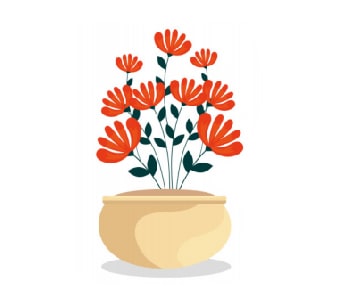 Natural pots can be easier to begin gardening with than garden beds. Natural pots are smaller and less permanent, so you can remove them easily if it turns out that gardening is not for you. Terracotta pots come in a variety of sizes and can be kept outside all year round. You can plant small crops in them and get a taste of what gardening is like before you invest in permanent beds.
Natural pots can be easier to begin gardening with than garden beds. Natural pots are smaller and less permanent, so you can remove them easily if it turns out that gardening is not for you. Terracotta pots come in a variety of sizes and can be kept outside all year round. You can plant small crops in them and get a taste of what gardening is like before you invest in permanent beds.
Don’t Pluck Your Leaves
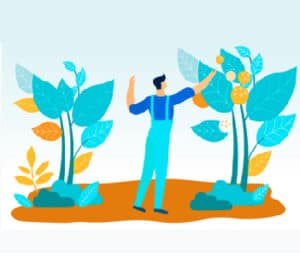
Leaves can make great compost, so don’t pluck leaves that you see hanging off of your crops. Instead, leave them to work their magic. Leaves can also attract worms that will feed off of the leaves and leave the fertilizing matter in the soil. Worms are great at aerating the soil as well, so they’re a great addition to any garden.
Prune With Care
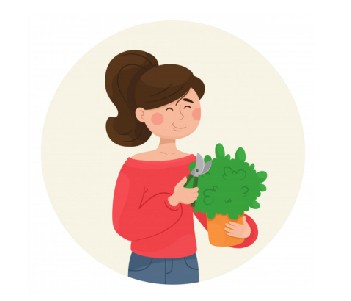 Pruning is an essential skill for any gardener. You need to know when and how to prune properly to encourage growth and to make your garden look neat and well put together. Summer flowering plants should be pruned in the spring to encourage the plant to flower impressively.
Pruning is an essential skill for any gardener. You need to know when and how to prune properly to encourage growth and to make your garden look neat and well put together. Summer flowering plants should be pruned in the spring to encourage the plant to flower impressively.
Winter flowering plants should be pruned straight after they’ve finished blooming so that the leaves can send food reserves to the roots. Evergreen trees and shrubs don’t lose their leaves year-round and therefore need to be pruned periodically through spring and summer. Pruning them in the colder months could damage the plant and cause it not to grow.
Avoid Aliens And Invasive Species
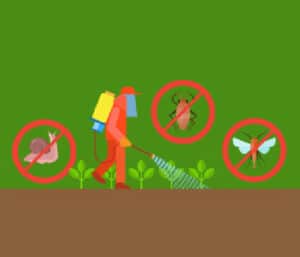
Believe it or not, there is such a thing as invasive species of plants. These pose a threat to the natural ecosystems of the USA and can travel themselves into different areas. You should avoid aliens and invasive species because they can quickly take over your garden and affect your other plants and animals.
Don’t Plant Too Close Together
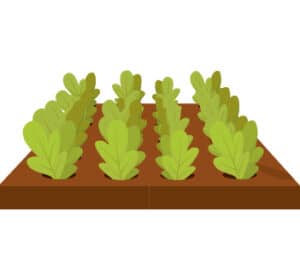
Planting too close together can cause your crops to struggle for the nutrients within the soil. If the roots grow close to other plants they can become tangled and damage the entire system of the plant. As the plant grows above ground, they might become crowded upward and around them. This will stunt their growth and leave you with less impressive crops.
What’s more, is that planting your crops too close together will make it very difficult for you to distinguish between them and work around them. To avoid pulling out the wrong seedlings, you should leave them with enough room around them to mature fully.
Conclusion: Good to grow?
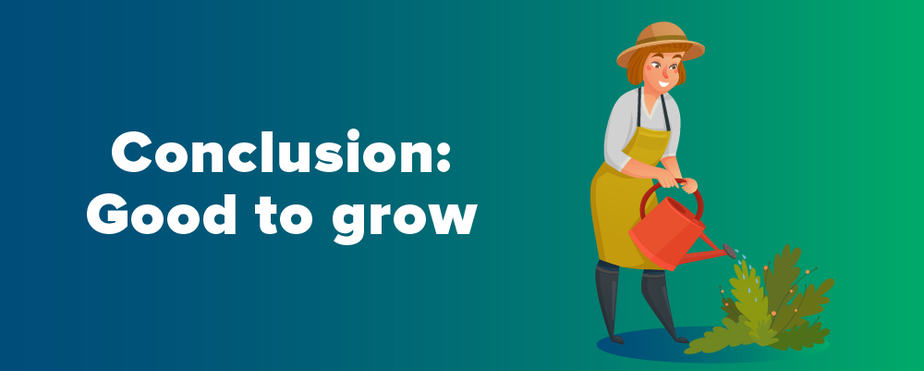
We hope that you’ve learned some valuable information about starting your gardening adventure. It can be fun, exciting, and a great learning experience for you and the whole family. Before we leave you to it, we’d like to leave you with a few final points to remember.
Don’t Rush Into It.
You’ll get the most out of your garden by taking a step back and planning it properly. Grab a gardening journal and start plotting your beds and researching the plants that you want to plant. Make sure that you have a clear schedule of when everything needs to get done so that you’re not rushing. Planning certainly isn’t the fun part, but it will make your experience much more worthwhile and rewarding.
Get Advice And Involve Friends/Family.
Do you have a friend who loves gardening, or perhaps a family member that you want to spend more time with? Planning a gardening day can be a great way to reconnect with loved ones. If they’re more knowledgeable in the art of gardening, they might even be able to help you turn your backyard into a raging success!
Document It For The Memories!
Finally, make sure that you take lots of pictures and jot down some notes about the time spent in your garden. There’s nothing better than being able to flick through a series of pictures that show your plants growing in every stage of their lifecycle. Plants come and grow, but the memories will remain with you forever!
